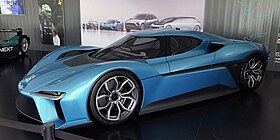Power-to-weight ratio is a calculation commonly applied to engines and mobile power sources to enable the comparison of one unit or design to another. Power-to-weight ratio is a measurement of actual performance of any engine or power source. It is also used as a measurement of performance of a vehicle as a whole, with the engine's power output being divided by the weight of the vehicle, to give a metric that is independent of the vehicle's size. Power-to-weight is often quoted by manufacturers at the peak value, but the actual value may vary in use and variations will affect performance.

The Shanghai International Circuit is a motorsport race track, situated in the Jiading District, Shanghai. The circuit is best known as the venue for the annual Chinese Grand Prix which was hosted from 2004 to 2019 and again from 2023 onwards.

Peter Dumbreck, nicknamed "Shunty", "Dumbo", or by some, "King Peter", is a Scottish professional racing driver.
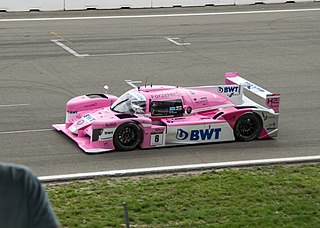
Forze is a student team specialised in hydrogen electric racing. It was founded at the Delft University of Technology in 2007 by Edgar van Os and has built 8 hydrogen fuel cell racing vehicles. The team's offices and workshops are located at the Schiehal in Delft, an old factory terrain in which many innovative companies have settled. In 2007, the team began designing and building go-karts with a hydrogen-electric drivetrain. With these vehicles they participated in the Formula Zero competition, hence the name ForZe. After five years the first full-size hydrogen race car was built, the Forze VI. Another three years later the project of the Forze VII began. This became the first hydrogen-electric racecar to ever participate in an official race against fossil-fueled vehicles. The latest iteration, the Forze VIII, was the first hydrogen-electric race car to ever beat petrol powered cars, and came in 2nd place at the Gamma Racing Days in Assen in 2019. Over the coming years the team wants to develop its cars in such a way that they can compete in a Le Mans Prototype endurance series.
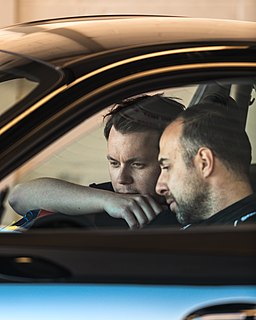
Jonathan Cocker is a British racing driver. In 2012 he won the ELMS GTE Pro Championship. He competed in the American Le Mans Series (ALMS) for Drayson Racing, a team run by Paul Drayson.
Briggs Automotive Company (BAC) is a British car manufacturer that created Mono, a road-legal sports car with only one seat. BAC is based in the city of Liverpool, United Kingdom, with 12 dealerships agreements in place across four continents. Mono cars are exported to 40 countries around the world.

The McLaren P1 is a limited-production mid-engine plug-in hybrid sports car produced by British automobile manufacturer McLaren Automotive. Debuted at the 2012 Paris Motor Show, sales of the P1 began in the United Kingdom in October 2013 and all 375 units were sold out by November. Production ended in early December 2015. The United States accounted for 34% of the units and Europe for 26%.
Rimac Automobili is a Croatian car manufacturer headquartered in Sveta Nedelja, Croatia, that develops and produces electric sports cars, drivetrains and battery systems. The company was founded in 2009 by Mate Rimac. Rimac Automobili's first model, the Concept One, was the world's fastest production electric vehicle. While manufacturing and marketing high-performance vehicles under its own brand, Rimac also develops and produces battery packs, drivetrain systems, and vehicles for other companies. The Applus+ IDIADA Volar-E is an example of a product developed for another company. During the 88th Geneva International Motor Show in March 2018, the company unveiled its second model, the Rimac Nevera.

The Rimac Concept One, sometimes stylized as Concept_One, is a two-seat high-performance electric car designed and manufactured in Croatia by Rimac Automobili. With a total output of 913 kW and an acceleration time from 0–100 km/h (0–62 mph) in 2.5 seconds, the Rimac Concept One was claimed to be the world's fastest accelerating electric vehicle in 2013.

The Spark-Renault SRT_01E, also known as the SRT01-e or the Spark Gen1, is an electric formula race car designed for the inaugural season of Formula E, in 2014–15. The car is the result of a 10-month collaboration between Spark Racing Technology, McLaren Electronic Systems, Williams Advanced Engineering, Dallara and Renault. The car was used until the end of Formula E's fourth season in 2018, after which it was replaced by the SRT05e.

David Hilton is an American/German automotive designer working internationally.
The FIA World Rallycross Championship is a rallycross series organised by the FIA in conjunction with series promoter Rallycross Promoter GmbH. From the inaugural season in 2014 to 2020, sanctioning was shared with IMG Motorsport.

Electric motorsport is a category of motor sport that consists of the racing of electric powered vehicles for competition, either in all-electric series, or in open-series against vehicles with different power trains. Very early in the history of automobiles, electric cars held several performance records over internal combustion engine cars, such as land speed records, but fell behind in performance during the first decade of the 20th century. With the renaissance of electric vehicles during the early 21st century, notable electric-only racing series have been developed, for both cars and motorcycles, including for example, the FIA Formula E Championship. In other racing events, electric vehicles are competing alongside combustion engine vehicles, for example in the Isle of Man TT and the Pikes Peak International Hill Climb, and in some cases winning outright.
Roborace was a competition with autonomously driving, electrically powered vehicles. Founded in 2015 by Denis Sverdlov, it aimed to be the first global championship for autonomous cars. From 2017 to 2019, the official CEO was 2016–17 Formula E champion, Lucas Di Grassi, who later became a member of Roborace’s supervisory board. The series tested their technology and race formats at FIA Formula E Championship events during 2016–2018. In 2019 Roborace organized Season Alpha, which consisted of 4 trial racing events with several independent teams competing against each other for the first time. In 2020–21 Roborace held Season Beta with 7 competing teams. All teams utilized the same chassis and powertrain, but they had to develop their own real-time computing algorithms and artificial intelligence technologies.
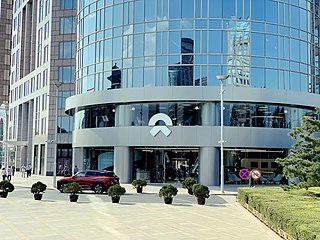
NIO is a Chinese multinational automobile manufacturer headquartered in Shanghai, specializing in designing and developing electric vehicles. The company is known for its development of battery-swapping stations for its vehicles as an alternative to conventional charging stations.

The Aspark Owl is an all-electric battery-powered sports car manufactured by Japanese engineering firm Aspark (アスパーク), under development since 2018, with the goal of making the fastest accelerating electric car. It will be built by Manifattura Automobili Torino (MAT) in Italy. Aspark plans a production run of 50 vehicles, with a list price of €2.5 million. The OWL was publicly unveiled in concept form at the 2017 Frankfurt Auto Show, and the production version was unveiled in November 2019 at the Dubai International Motor Show.
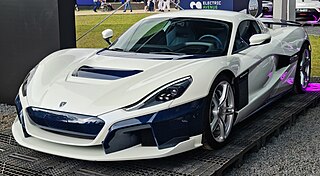
The Rimac Nevera is an all-electric sports car designed and manufactured by the Croatian automotive manufacturer Rimac Automobili. The first production prototype car was released in August 2021. Nevera production has been limited to 150 vehicles. Having completed crash testing for homologation, Rimac plans to deliver the Nevera to customers in mid-2022. The Nevera is manufactured in the same factory and at the same rate as the Pininfarina Battista, which is based on the same platform.

The Volkswagen I.D. R also known as Volkswagen I.D. R Pikes Peak, is a prototype fully electric vehicle designed as part of Volkswagen's I.D. Project, and included within Volkswagen's R series of cars designed specifically for competing in motorsport events. It is the first electric racing car designed by Volkswagen.

The NIO ET5 is an upcoming compact executive electric sedan to be produced by Chinese electric car company NIO.

The Subaru STI E-RA is a racing vehicle equipped with a battery-electric drivetrain. It was developed by Subaru's performance and racing division Subaru Tecnica International (STI). The car's initials stand for "Electric—Record Attempt", keeping with STI's tradition of designating its highest-performance models with the "RA" label; a concept car prototype debuted at the Tokyo Auto Salon in January 2022.
